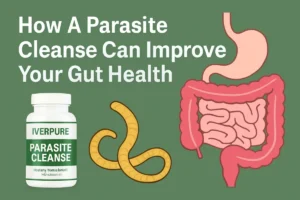Disclaimer: This content is for informational purposes only and does not substitute professional medical advice. Always consult a healthcare provider or registered dietitian before making changes to your diet, especially if you have a medical condition like IBS or other digestive issues.
Bloating is a common and uncomfortable issue that many people struggle with, especially during certain seasons when diets change or we overindulge in foods that don’t sit well with our digestive systems. If you’re someone who experiences bloating regularly, this post will provide valuable insights into how a Low FODMAP diet plan can ease bloating and improve your overall gut health. You’ll learn about the foods that trigger bloating, how this diet works, and how to incorporate it into your lifestyle.
Along the way, we’ll answer common questions that many people have about bloating and digestive issues. By the end, you’ll have a clear understanding of why a Gut Friendly approach could be just what you need this season to feel better and more comfortable.
What is a Low FODMAP eating plan?
It focuses on reducing foods that contain high levels of certain carbohydrates called FODMAPs (Fermentable Oligo-, Di-, Mono-saccharides, and Polyols). These short-chain carbohydrates are poorly absorbed in the small intestine and can lead to bloating, gas, and other uncomfortable digestive issues. Foods high in FODMAPs include certain fruits (like apples), dairy products, beans, and wheat-based products. By cutting back on these foods, people with sensitive digestive systems, particularly those with IBS (Irritable Bowel Syndrome), can reduce bloating and improve gut function.

This diet is typically implemented in phases. Initially, high-FODMAP foods are eliminated from the diet, followed by a gradual reintroduction to pinpoint which foods cause discomfort. It’s a structured approach that can help individuals regain control of their digestive health.
Low FODMAP Meal Delivery for Convenience
When following a diet, convenience is key. If you’re finding it hard to keep up with the complexities of meal prepping, many services now offer Low FODMAP meal delivery to make this process easier. These services provide pre-portioned, ready-to-eat meals that adhere strictly to the guidelines of this diet. This can save you time and ensure that you’re always eating the right foods, especially when you’re busy or don’t feel like cooking. By choosing a service that offers low-FODMAP meals, you can maintain your diet without the stress of planning and shopping for ingredients.
Why the Gut-Friendly Diet Plan Works for Bloating
When FODMAPs are poorly absorbed, they pass into the large intestine, where they are fermented by bacteria, creating gas. This process can lead to bloating and discomfort. By reducing the intake of high-FODMAP foods, the production of gas is minimized, which directly impacts bloating levels. The diet plan essentially gives the digestive system a break, allowing it to function more effectively without the added stress of high-fermenting foods.
For many individuals, following this diet plan brings quick relief from bloating symptoms. It’s not just about avoiding specific foods; it’s about identifying triggers and creating a manageable, long-term eating plan that promotes overall digestive wellness.
Key Benefits of a Low FODMAP Diet Plan for Bloating
1. Reduced Gas Production
When fewer fermentable foods are consumed, the digestive system experiences less fermentation in the gut, which means less gas is produced. This leads to a significant decrease in bloating and other uncomfortable symptoms like excessive burping and flatulence.
2. Improved Gut Health
The reduction of FODMAPs through a specific diet helps restore the proper balance of healthy gut bacteria. Your digestive system has the opportunity to heal when you eliminate particular foods that can irritate the digestive tract during recovery. This leads to lasting health advantages for your entire body.

3. Easier Digestion
The absence of continuous reactions to problematic foods results in better digestive function. The diet plan eliminates food-related uncertainty because it presents specific dietary criteria that promote smoother digestion.
How to Start a Diet Plan
Beginning the diet plan requires initial preparation because the actual implementation turns out to be simpler to follow than expected. Educate yourself about FODMAP low foods before you start your diet plan by eliminating high-FODMAP foods step by step. Building this shift requires time, yet the reduction in bloating makes the process entirely worthwhile.
A healthcare professional or dietitian must be consulted for essential nutrient checks throughout the elimination phase, especially. Healthcare professionals, alongside dietitians, assist clients in developing unique food plans while teaching techniques to deal with any diet-related obstacles that might appear during the process.
Comparison of High FODMAP vs. Low FODMAP Foods
Here’s a quick look at the difference between high FODMAP and Low FODMAP foods. This table will help you quickly identify which foods are likely to cause bloating and which ones are safer for your digestive system.
| Food Category | High FODMAP Foods | Low FODMAP Foods |
| Fruits | Apples, Pears, Watermelon | Strawberries, Blueberries, Oranges |
| Vegetables | Cauliflower, Mushrooms, Onions | Carrots, Zucchini, Spinach |
| Grains | Wheat, Rye, Barley | Rice, Quinoa, Oats |
| Dairy | Milk (cow, goat), Ice cream | Lactose-free milk, Hard cheeses, Yogurt |
This table provides a clear comparison of high vs. low FODMAP foods. Incorporating more low-FODMAP options can significantly reduce bloating and discomfort.
Incorporating Low FODMAP Recipes into Your Routine
Many delicious recipes fall within the guidelines. From breakfast options to dinner ideas, it’s easier than you might think to find recipes that will help reduce bloating and other digestive issues. Try incorporating simple dishes like scrambled eggs with spinach and lactose-free cheese for breakfast or grilled chicken with roasted vegetables for lunch or dinner. These meals are both tasty and easy to prepare.
Here are some simple low-FODMAP meal ideas:
- Breakfast: A smoothie with lactose-free yogurt, strawberries, and spinach.
- Lunch: Grilled salmon with a side of quinoa and steamed green beans.
- Dinner: Roasted chicken with sautéed zucchini and carrots.

Each of these meals is packed with nutrients and free of high-FODMAP ingredients, making them ideal for a bloating-free day.
Common Mistakes to Avoid
While the Gut Friendly diet can work wonders, there are a few mistakes people often make when starting the diet. One common mistake is not eliminating high-FODMAP foods during the initial phase. This can lead to confusion and may prevent you from seeing the benefits of the diet. Another mistake is reintroducing foods too quickly before your gut has had enough time to adjust, which can cause bloating to return.
To avoid these issues, stick to the guidelines carefully and be patient with the process. Gradually reintroduce high-FODMAP foods one at a time, noting any symptoms that arise, and allow your digestive system to heal before making changes.
Low FODMAP Diet and IBS
For those dealing with IBS (Irritable Bowel Syndrome), an eating plan can be beneficial. Studies show that up to 75% of people with IBS experience significant symptom relief when following this type of diet. By managing the intake of specific FODMAPs, individuals with IBS can reduce bloating, gas, cramping, and other discomforts associated with the condition. If you’re looking for IBS diet recipes, a meal plan is the perfect solution to relieve your symptoms.
Conclusion: A Bloat-Free Season with Digestive Ease
By now, you should have a clear understanding of how a FODMAP approach plan can help reduce bloating and promote better digestive health. Whether you’re struggling with IBS or want to feel more comfortable in your own body, reducing FODMAPs from your diet can make a noticeable difference.
Remember to introduce the diet slowly, track your progress, and reach out for professional advice when needed. With a little planning and consistency, you’ll be able to enjoy a season free from the discomfort of bloating.
If you’re looking for a convenient way to start your Gut Gentle journey, consider using low-FODMAP meal delivery services that provide pre-made meals to fit your dietary needs. This is a great way to ensure you’re following the diet correctly while saving time on meal prep.
Frequently Asked Questions
What is a low-FODMAP diet, and how does it help with bloating?
A FODMAP approach helps alleviate bloating by reducing the intake of specific carbohydrates that are poorly absorbed by the small intestine, leading to less gas production and less fermentation in the gut. This leads to a decrease in bloating and other digestive issues.
Can I still eat a variety of foods on a low-FODMAP diet?
Yes, although certain high FODMAP foods are restricted, there are still plenty of delicious and nutritious foods, including fruits, vegetables, grains, and proteins. You can enjoy a variety of meals while managing your bloating symptoms.
Are there any risks or side effects when following a FODMAP approach for bloating?
The eating plan is generally safe, but it’s essential to follow it under the guidance of a healthcare provider, especially during the elimination phase. Some individuals may initially experience nutrient deficiencies if the diet is not balanced correctly, so seeking professional advice is recommended.












